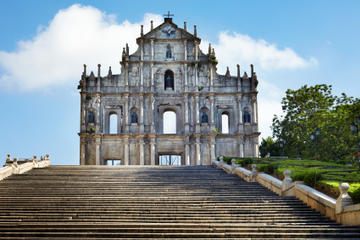Ruins of the Church of St. Paul
TIME : 2016/2/22 10:11:15

Ruins of the Church of St. Paul
One of the most recognizable, dramatic, and popular icons of the city of Macau are the Ruins of St Paul's Cathedral. Originally constructed in 1580 by Jesuit priests, the church was twice ravaged by fire in 1595 and 1601. Not to be deterred by the loss, construction resumed in 1602 and ultimately grew into what would be the largest Christian church on the entire Asian continent. As fate would have it, however, disaster met the church once again in 1835 when fire ripped through the soaring cathedral for the third and final time.
Devastated by the blaze all that remains of the Church of St Paul are the 66 stone steps which ascend a steep hill and the intricately carved five-tier façade for which the ruin is now so famous. Carved from granite which was able to withstand the fire, the façade features a panorama of carvings which fuse traditional European Renaissance and Oriental artistic styles. The façade was carved by Japanese Christians escaping religious persecution and was constructed in a classically Baroque style. Images found on the façade include traditional Jesuit scenes from the Bible to Portuguese sailing vessels with billowing sails. The stone lions which flank the third and fourth tiers are representative of the Chinese influence in the construction and design of St. Paul’s.
Behind the façade now sits St Paul’s Museum as well as remnants of the original city walls. Dating to 1569 the naturally formed barriers are formed from a blend of clay, soil, sand, glutinous rice, crushed rocks and small bits of oyster shells.
While viewing the façade from beneath the ruin is reason enough to pay a visit to St Paul’s, many visitors opt to ascend the steel staircase which runs behind the soaring structure. Already perched on a hill overlooking the city, steel staircase allows visitors to peer out the windows of the second-tier for a framed view of the city of Macau which is unlike any other. Be sure to bring a coin to toss into the second-tier window from the staircase—a classic Macanese tradition for bringing good fortune.
